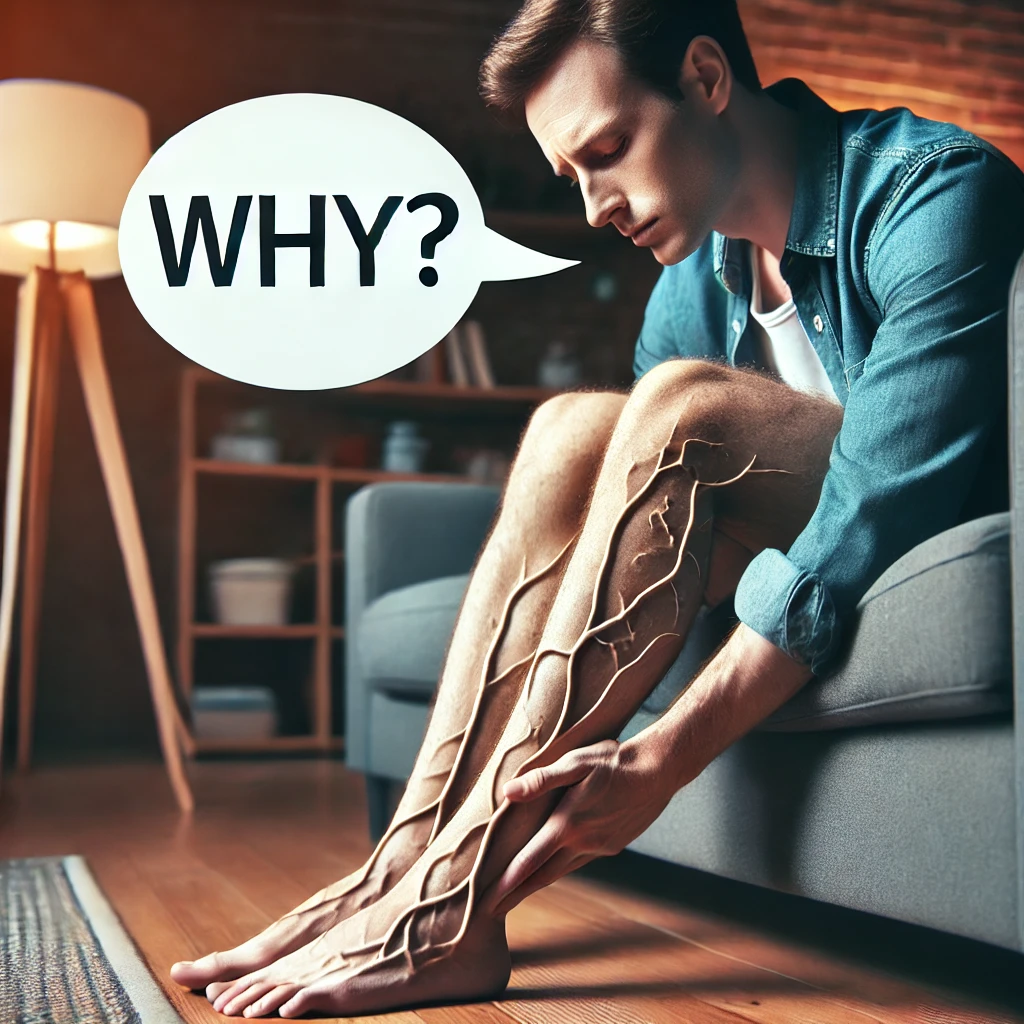Why Do I Have Ropey Veins on My Legs? Understanding the Root Cause of Bulging Veins and What You Can Do About It

Are Ropey Veins on Your Legs More Than Just a Cosmetic Issue?
If you've ever looked down at your legs and noticed bulging, twisted, or rope-like veins, you’re not alone. These prominent veins—often bluish or purplish in color—are commonly known as varicose veins, and they affect up to 35% of adults in the U.S., especially women over 40.
While they might seem like just a cosmetic nuisance, ropey veins can actually be a sign of deeper vein problems. Left untreated, they can lead to leg pain, swelling, skin changes, and more serious complications.
In this blog, we’ll break down:
- What ropey veins are
- What causes them
- Risk factors and symptoms to watch for
- And the modern, minimally invasive treatments available to help you feel better and look your best
What Are Ropey Veins?
“Ropey” veins are large, swollen, and twisted veins that bulge visibly under the skin, most commonly on the legs and thighs. These are varicose veins, which occur when vein valves become weak or damaged, causing blood to pool instead of flowing efficiently back to the heart.
This backflow of blood, or venous reflux, leads to:
- Enlarged veins
- Twisting and bulging of vein walls
- Visible rope-like patterns on the legs
Why Do I Have Ropey Veins?
The most common reason is chronic venous insufficiency—a condition where the valves inside the leg veins don't work properly. This causes blood to back up, increasing pressure inside the veins and stretching them out.
Common Causes Include:
🔁 1. Genetics
If your parents or grandparents had varicose veins, there’s a good chance you will too. Vein weakness can run in families.
👩🍼 2. Pregnancy
Hormonal changes and increased pressure on the pelvic veins can trigger vein problems—especially during the second and third trimesters.
🧍♂️ 3. Prolonged Standing or Sitting
Jobs that require standing or sitting for long periods (nurses, teachers, retail workers) increase leg vein pressure and risk for varicose veins.
🧬 4. Hormonal Changes
Estrogen and progesterone affect vein wall tone, which is why women are more prone to developing ropey veins—especially during menopause or while taking hormone therapy.
📈 5. Excess Weight
Extra body weight increases pressure on leg veins and worsens reflux.
⌛ 6. Aging
Veins naturally lose elasticity over time, and valves can become leaky or dysfunctional.
🏋️ 7. Heavy Lifting or High Impact Exercise
Intense strain, especially with improper form, can worsen existing vein weakness.
Are Ropey Veins Dangerous?
While not always dangerous, ropey veins are often a sign of underlying venous disease and can lead to complications if not addressed.
Common Symptoms Include:
- Leg aching or heaviness
- Itching or burning around the veins
- Swelling in ankles or calves
- Restless legs or cramping, especially at night
- Skin discoloration near ankles
- Hard, tender veins (a sign of inflammation or clot)
In more advanced cases, untreated varicose veins can lead to venous ulcers, phlebitis, or even blood clots.
How Are Ropey Veins Diagnosed?
At Sheen Vein & Cosmetics, we use non-invasive ultrasound imaging to check the health of your leg veins. This allows us to:
- Assess blood flow
- Identify faulty valves
- Measure vein size and function
- Detect signs of chronic venous insufficiency
Early diagnosis is key to preventing progression and improving outcomes.
What Can Be Done About Ropey Veins?
The good news? You don’t have to live with ropey veins—or the symptoms they cause. Modern vein care is safe, effective, and virtually pain-free.
Top Treatment Options:
✅ 1. Ultrasound-Guided Sclerotherapy
- A medicated solution is injected into the vein
- Collapses and seals the damaged vein
- Blood reroutes to healthier veins
- Great for smaller varicose veins and spider veins
✅ 2. Endovenous Laser Ablation (EVLA)
- A laser fiber is inserted into the vein
- Heat closes off the diseased vein
- Fast recovery with minimal discomfort
- Best for larger, ropey veins
✅ 3. Radiofrequency Ablation (RFA)
- Similar to EVLA, but uses radiofrequency energy
- Less post-procedure bruising
- Effective for refluxing saphenous veins
✅ 4. VenaSeal™ Closure System
- Uses a medical adhesive to seal faulty veins
- No heat, no compression stockings required
- Quick return to activity
✅ 5. Ambulatory Phlebectomy
- Minimally invasive removal of large, ropey veins through tiny incisions
- Often combined with EVLA or RFA for best results
- No stitches, and little to no scarring
Can I Prevent Ropey Veins From Getting Worse?
While you can’t change your genetics, you can support healthy veins with some lifestyle adjustments:
Tips to Improve Vein Health:
- 🚶♀️ Move frequently: walking boosts circulation
- 🧦 Wear graduated compression stockings
- 🛌 Elevate your legs 15–20 minutes daily
- 🍎 Maintain a healthy weight and anti-inflammatory diet
- 🚫 Avoid long periods of standing or sitting
- 💧 Stay well hydrated
- 🧘♀️ Try gentle stretching, yoga, or swimming
Even if ropey veins are already present, these steps can help reduce symptoms and prevent new ones from forming.
Final Thoughts: Ropey Veins Aren’t Just Cosmetic—They’re a Signal
If you’ve noticed bulging, ropey veins on your legs, don’t ignore them. These veins often reflect an underlying circulation issue that may get worse over time if left untreated.
Fortunately, today’s vein treatments are minimally invasive, highly effective, and customized to your unique needs. Whether you’re experiencing leg heaviness, swelling, or just want smoother, healthier-looking legs, you have options.
At Sheen Vein & Cosmetics, We Specialize in Restoring Leg Health and Confidence
Dr. Vidal Sheen and our experienced team offer the most advanced vein diagnostics and treatments—right here in a welcoming, state-of-the-art setting. We’ll evaluate your veins, explain your options, and help you reclaim comfort, energy, and confidence.
Schedule your vein consultation today and take the first step toward healthier legs that look and feel better.